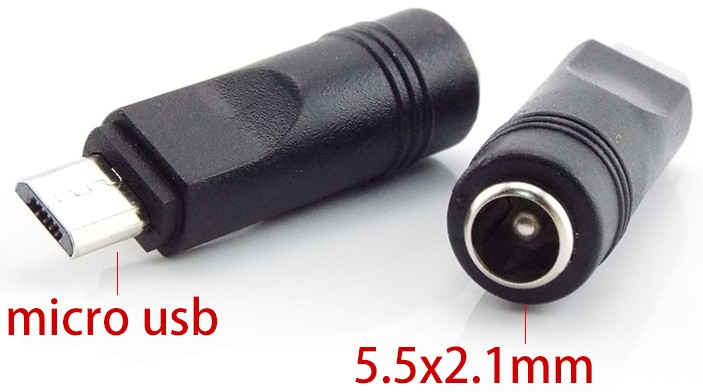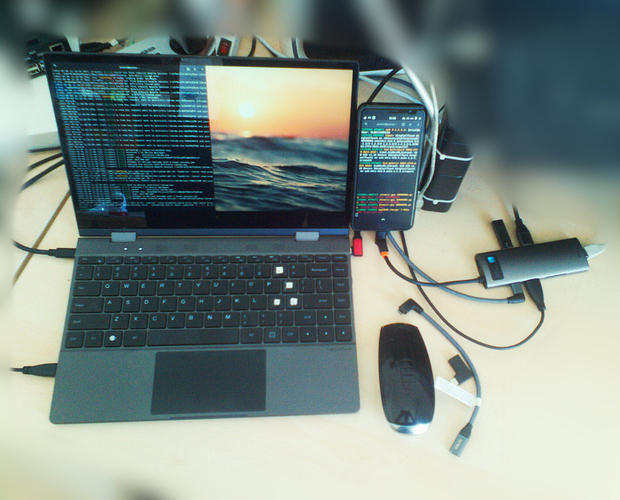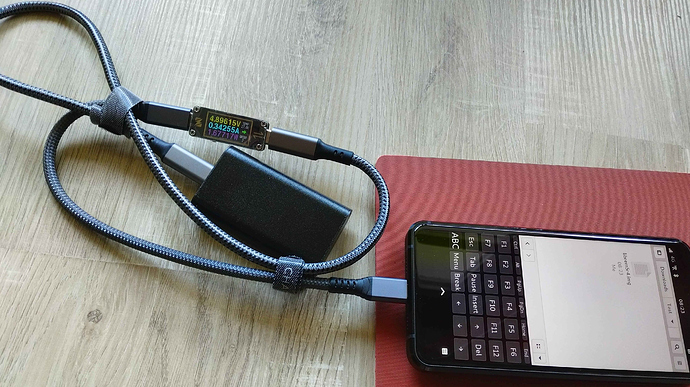100%=4.2V, when Librem 5 battery fully charged and inside of the phone. If Librem 5 battery charged outside of the Librem 5 to 4.35V, Librem 5 will show 100% again and anyway, let us understand that fact. Therefore finding exact point (meaning 4.2V) when to stop charging internally (by using original power supply), as original battery inserted into Librem 5, is difficult while battery by itself have no control over it (to include to not being overcharged, very positive approach from Purism that prolongs its expected usage lifetime significantly). @dos and @amosbatto told us already which peace of Librem 5 hardware (+ finely adjusted Linux or rather PureOS software) is in charge there, inside of the Librem 5.
As long as you are not using Librem 5 as a power bank* … or rather I’ll do that here showing two picture of currents of 5V/0.26A (standby mode, as mounted) and 5V/0.34A coming out from Librem 5 USB-C port in direction (please follow green arrow shown on measuring device) or toward some low consumption (just let me present it as such here) 256GB external SSD drive (just not to write here things that might not be simple, although logical, to explain):
Also,
@KP2002, any of your potential further testings should be done from the point of having Librem 5 battery at 100% (4.2V), or rather from the point where Librem 5 red LED indicator turns off while connected to its 5.0V PD power supply, disconnect there originally provided power supply and connect/start your discharge testings.
I need to stop adding anything else to this post purposely.
Yes, I agree with your thought completely. Just to add is that I’m very satisfied and think that battery percentage shown within PureOS is more than accurate. It will improve with future Linux Kernels for sure, yet I’m already quite confident that % numbers shown are more than adequate. And, please do not count on much or rather full battery discharge performance (in general) when here related one as well as any other Li-ion battery under 50%. I do not know everything either as 50% probably equals to 3.8V, but not sure and not about to check this (but perhaps soon, just lazy at the moment, but anyway @guru might reliably check for the BPP-L503 voltage at GUI value of 50% and this battery taken out for such check/test).
*I have one in mind, it is old school 5V only based, with four 18650 cells (still have them somewhere), but not sure at this point if I’ll be able to get another one next week for the purpose of another (actual) discharging test (in order to measure max. 5.0V current going out from the Librem 5 USB-C port toward 5V microUSB from power bank that is built-in as its charging port only, to this very old school Anker power bank: https://powerbanktest.net/test/anker-powercore-10000mah-quick-charge-3-0/ by expecting to pull out 5.0V/1.0A from Librem 5 USB-C port at least, for short time only). But anyway and what I might already conclude by myself, unofficially of course, USB-C port of Librem 5 should not be brought into situation where current passing through exceeds 1.5A, whatever direction used, in or out … even if from manufacturer provided/maximum Continuous Discharge Current/rate of BPP-L503 battery might be rated at more than 3.0A.
EDIT: Actually and to be correct, Librem 5 passing through the USB-C port amperage (besides throughout clearly defined precise voltage value) when charging only its battery should not to exceed much more than 2.0A (approximately and in total with its screen on) as necessarily and kindly presented here:




